At this time, it was my first time back in Tokyo after I had left in 2006 when I was as an exchange student at Tokyo University of Foreign Studies.
Because the Tokyo area was moderately affected by the earthquake/tsunami/nuclear disaster (the 3/11 disaster), many foreigners living in Tokyo at the time were hysterically leaving for home via their embassies or for "safer" areas like the Kansai area or even places like Hong Kong because paranoia over radiation concerns. Instead because we had already booked and planned everything, we decided that it was safe to visit and it was indeed safe during our time there. In addition, there were less crowds!
The only odd thing that happened was that due to all the nuclear reactors being in shutdown mode as a precautionary measure, there were fears of a power shortage so in order to conserve energy, the train operators decided not to turn on any of the lights inside the trains during the overground sections. It felt weird to be riding the JR Yamanote Line in the dark with only sunlight coming through the windows.
The Nakamise-dori in front of the Sensoji Temple in Asakusa.
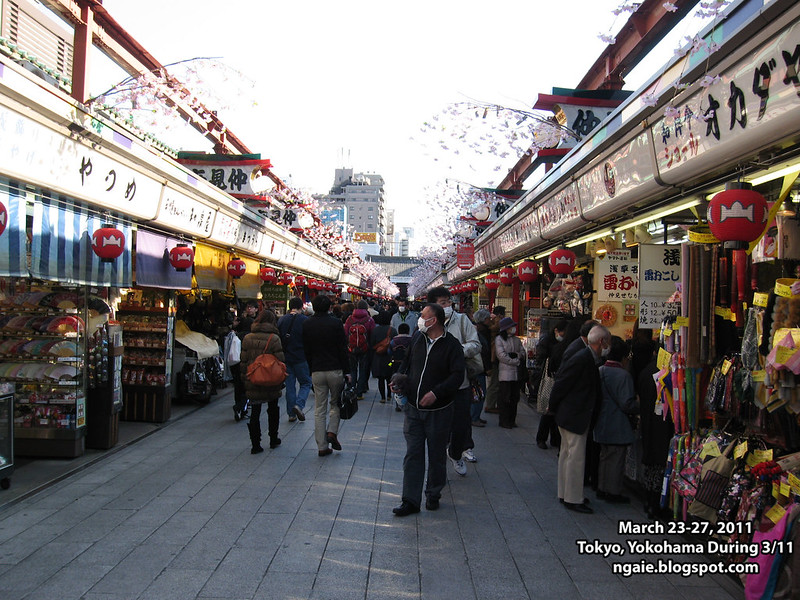
After arriving in the morning on March 23, 2011 in Shinjuku via an overnight bus(*) from Hiroshima we checked into our hotel and I decided to show my mom the area where I lived when I was an exchange student at Tokyo University of Foreign Studies way back in 2005-06.
(*) For tall people, like myself, overnight buses are a nightmare because the seats are designed for the average Japanese body, who are not so tall, so it feels like sitting in economy class in an airplane, except that the ride is very bumpy and you cannot get up. Another thing about overnight buses is the standard practice among bus operators in Japan to turn off all the lights and to bring down the black curtains on the windows to try to force passengers to sleep. In this case, even if you cannot sleep, you cannot do other things like read a book because it is so dark and you do not want to disturb other passengers.
Another interesting thing on the overnight buses that I noticed were the salarymen who were forced to take the overnight bus for transportation, in this case, they would sleep on the seat with their suits on, or they would hang their jacket and sleep with their dress shirt/pants on! I don't know how they can just continue to go to work after such a rough night of sleep?
The dormitory that I stayed in during my student exchange days had been turned into a police dormitory because the university opened new dormitories for foreign students on the suburban campus. It is too bad that future foreign students to Tokyo University of Foreign Studies could not experience life in the heart of the old city.
Unauthorized persons need not enter!
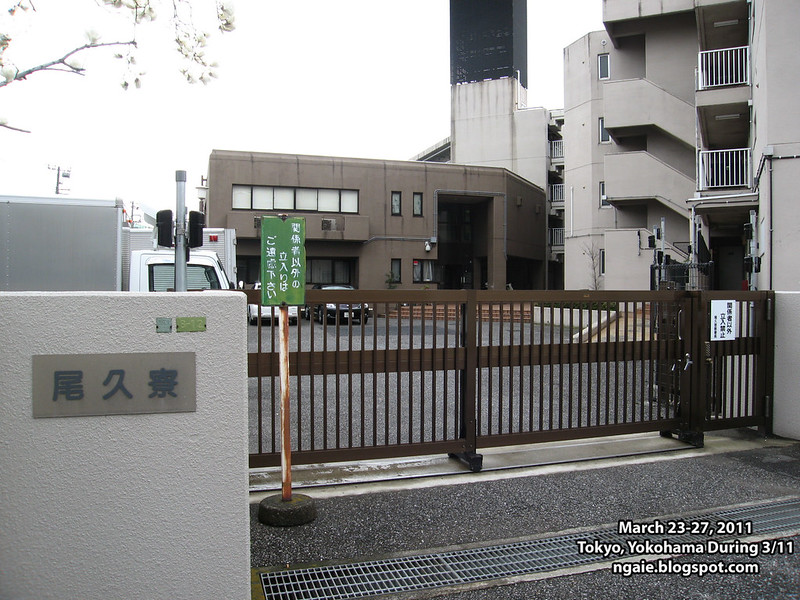
After walking around the area we took the Toden (one of Tokyo's last streetcar lines) to the Waseda University campus and explored a bit over there. One of the things we noticed was that almost all the passengers of the Toden were elderly people...
The next day on March 24, 2011, we went to Yokohama to visit the Shin-Yokohama Ramen Museum, a ramen "food theme park". This was the second time being here since my first visit back in 2006. Other than a new rotation of ramen shops, things mostly stayed the same. You still had a pay an admission fee to enter the museum and then you still had to pay to order the ramen from the shops. Therefore, a bowl of ramen here can get pretty pricey.
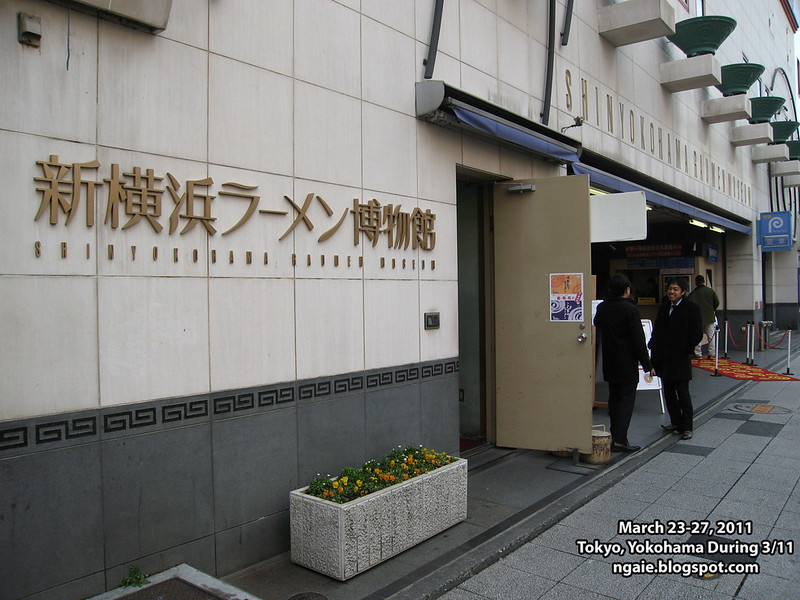
All the ramen shops were downstairs.
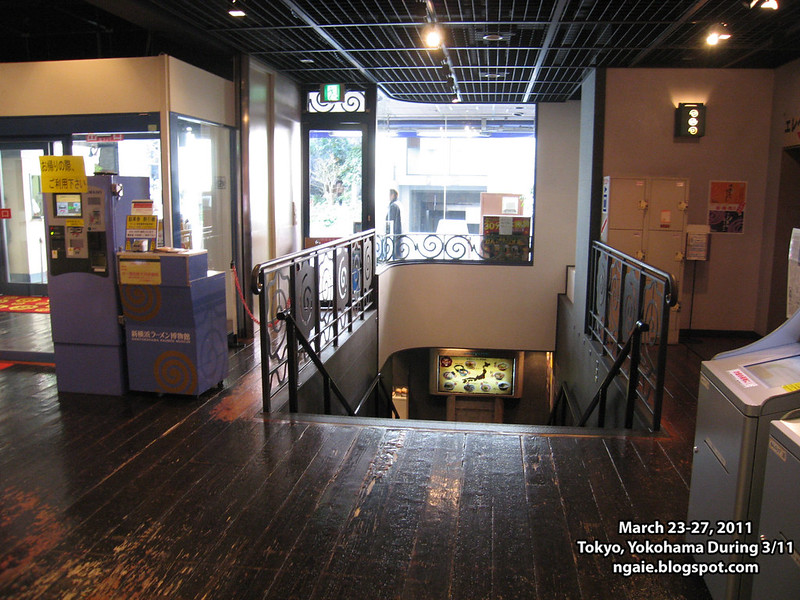
The setting of the museum is the "good old days" of early Showa Tokyo (1950s and 60s).
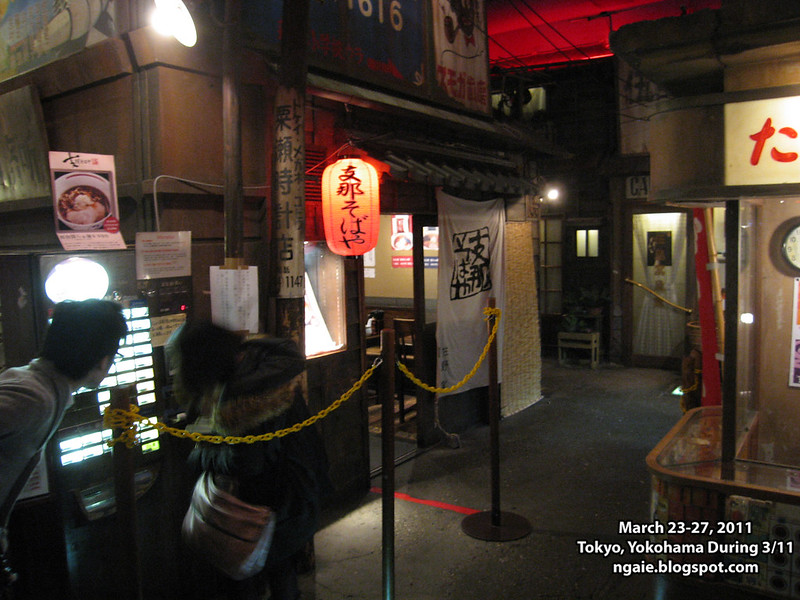
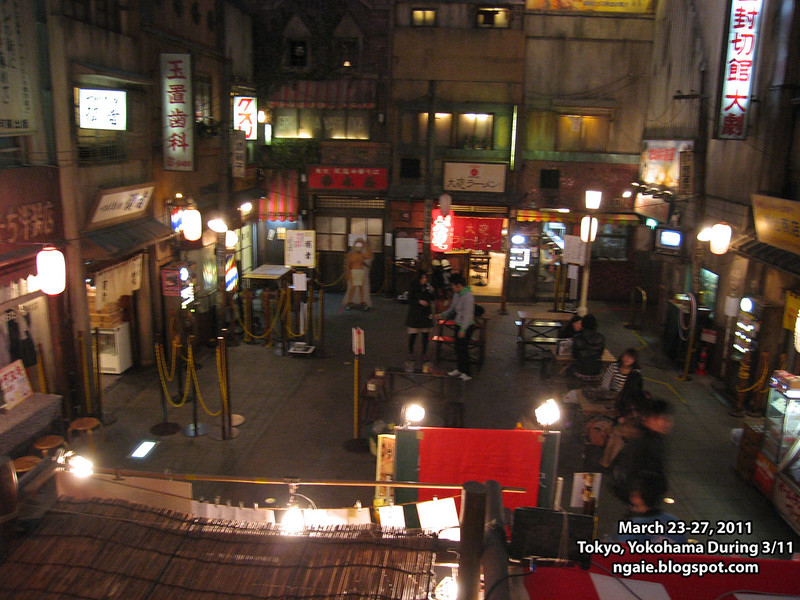
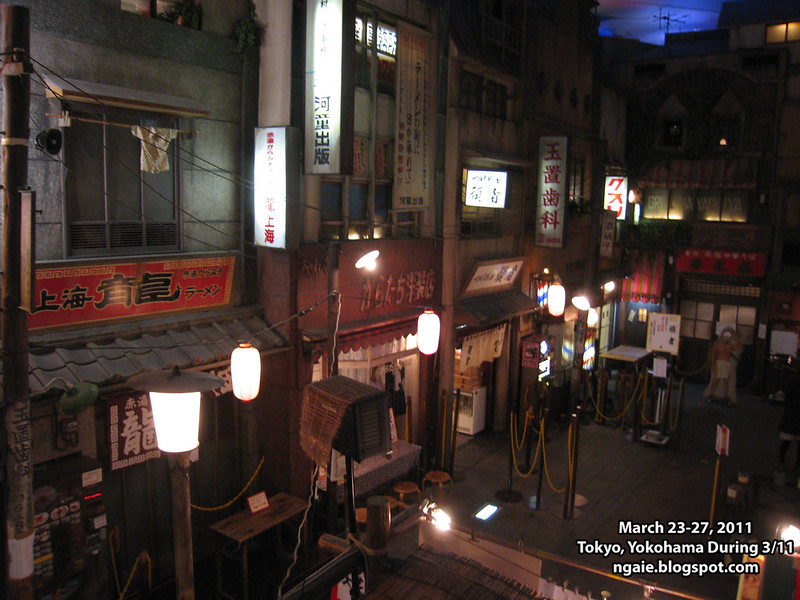
The shoyu-ramen that we ordered.
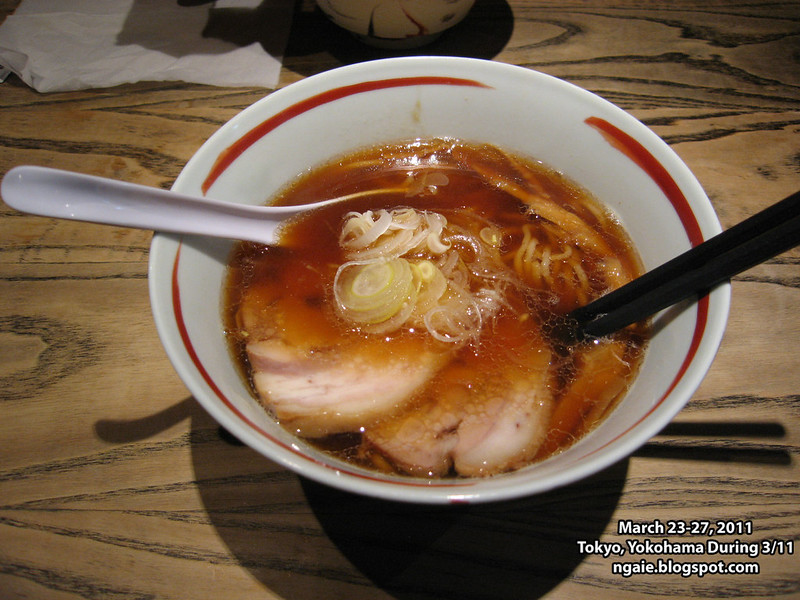
After eating we went back upstairs to explore the massive gift shop which included information and artifacts related to ramen.
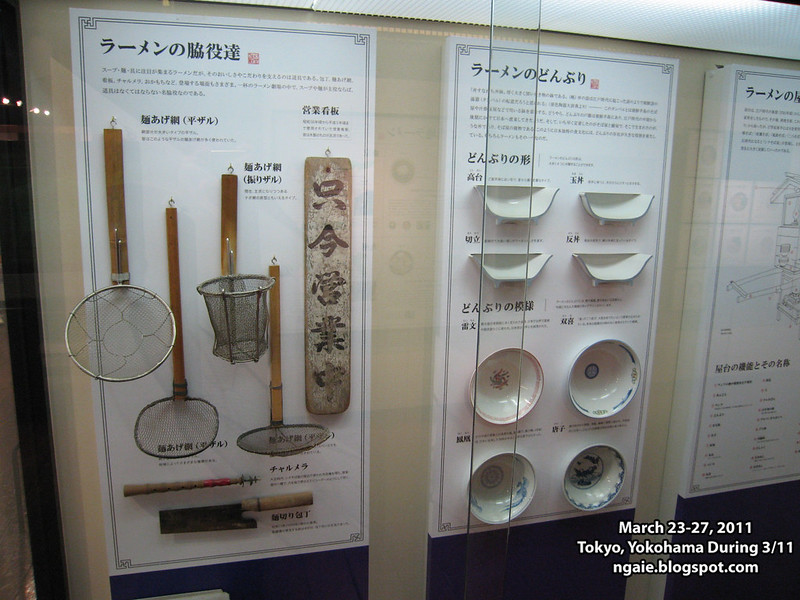
The different styles of ramen all over Japan. According to this, there are 4 main styles of ramen in Japan. The Sapporo (札幌) style was started in 1922 and uses a miso-based soup. The Tokyo (東京) style was started in 1910 and uses a shoyu-based (soy sauce) soup. The Kitakata (喜多方) style uses the Kitakata shoyu-based (soy sauce) soup and was started in 1925. The last style is the Kyushu (九州) style was started in 1937 and uses a tonkotsu-based (pork bone broth) soup.
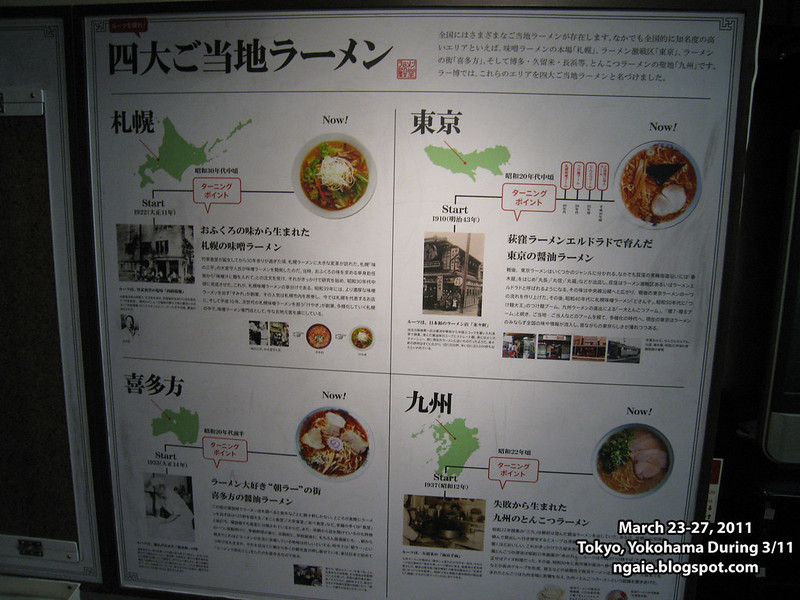
Examples of all the different variations of ramen that has been invented since ramen was popularized in Japan. According to this display, there are 28 different types of ramen!
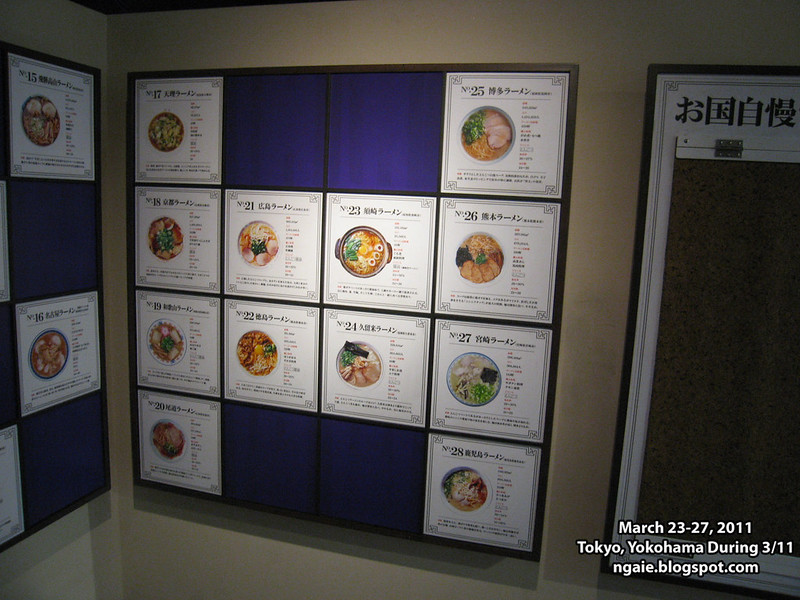
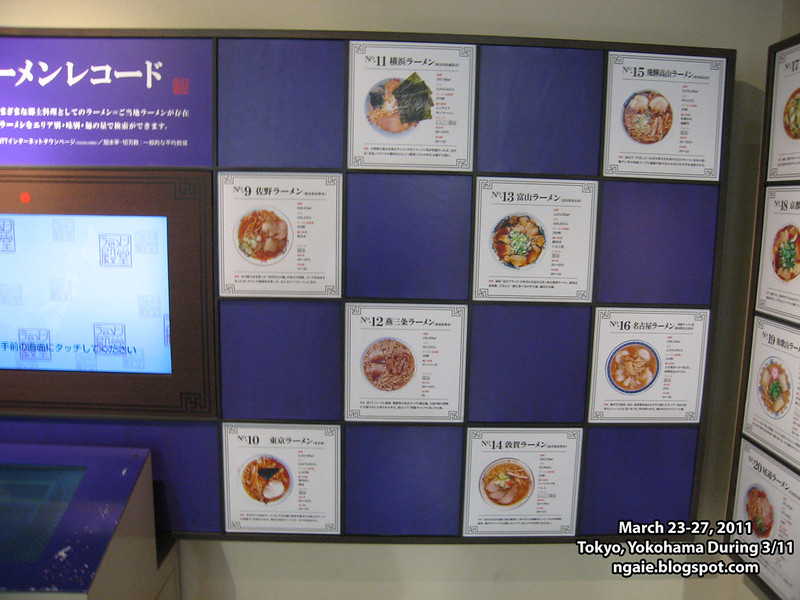
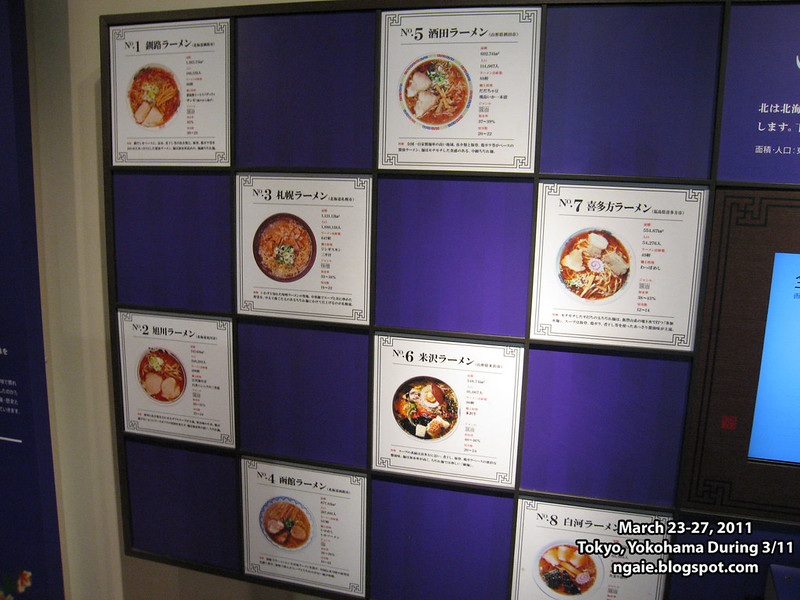
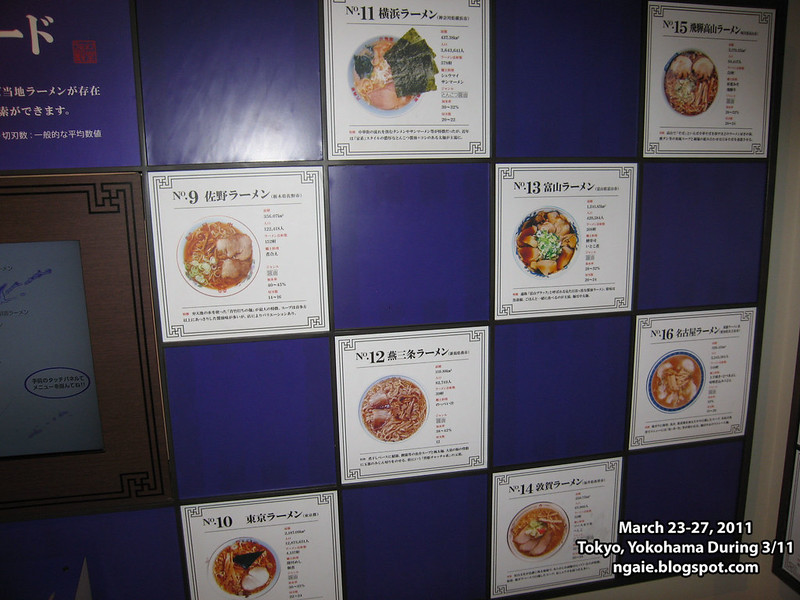
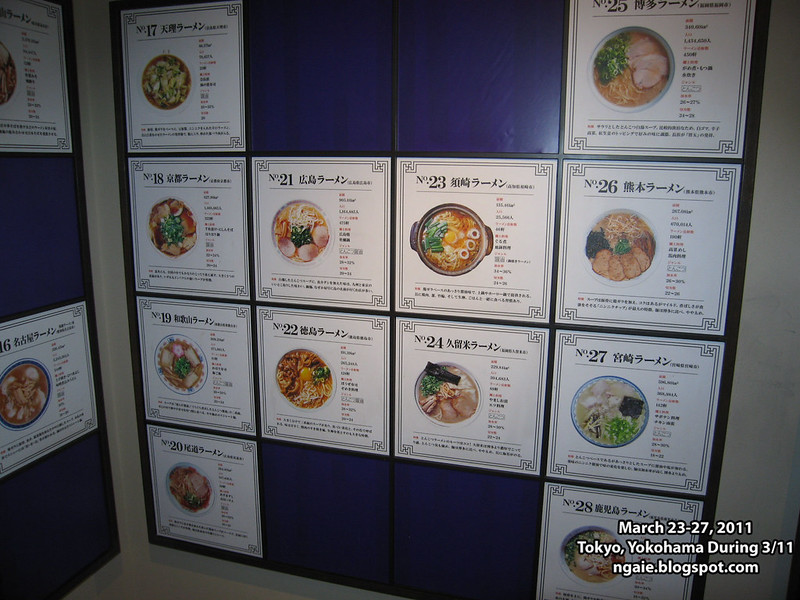
People in Japan love to buy food souvenirs and here you can buy pre-made ramen and soup from all your favourite ramen shops to eat at home.
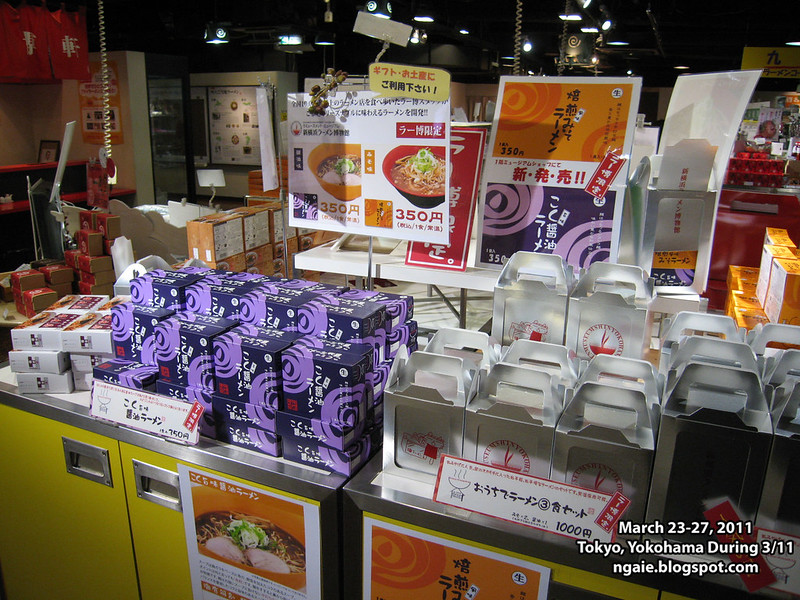
Ramen goods from the Kanto region, the Hokkaido region, and Kyushu region...
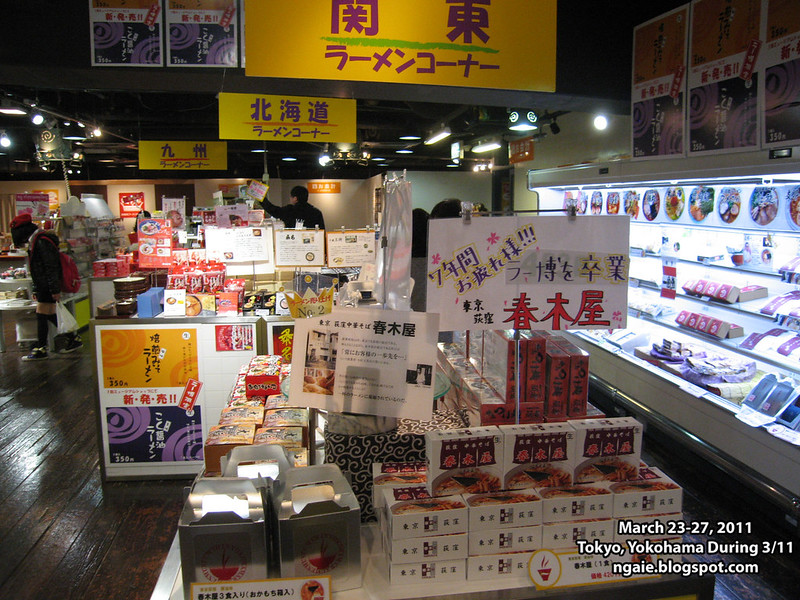
Fresh ramen souvenirs.
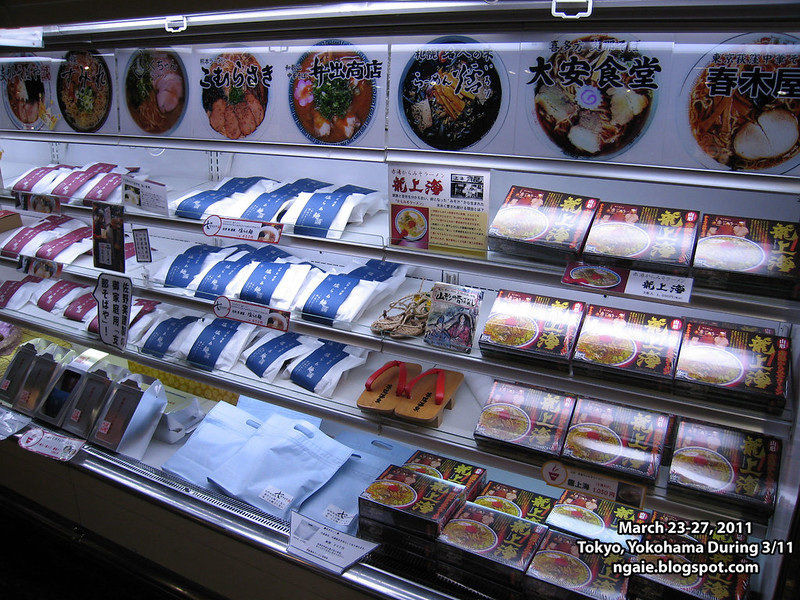
Here you can buy ramen bowls for home use.
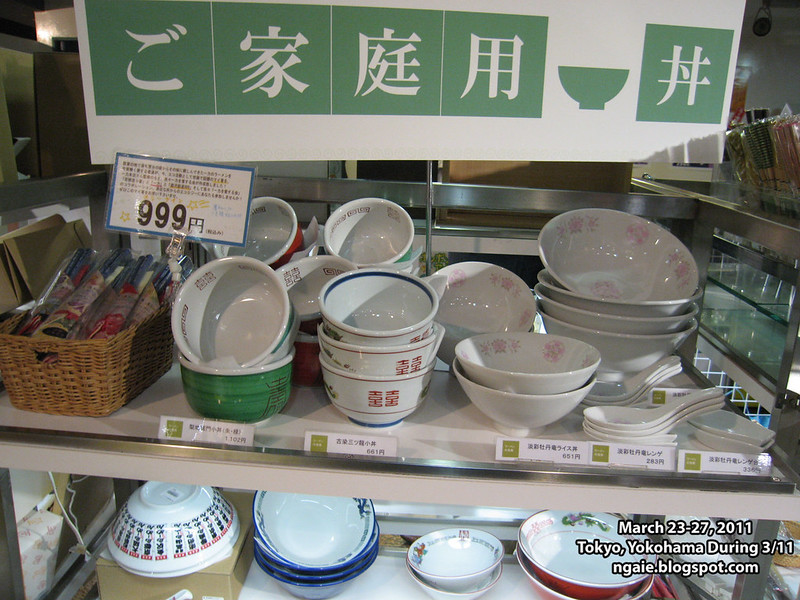
Here you could personalize your ramen souvenir by picking out the type of noodles, soup and etc.
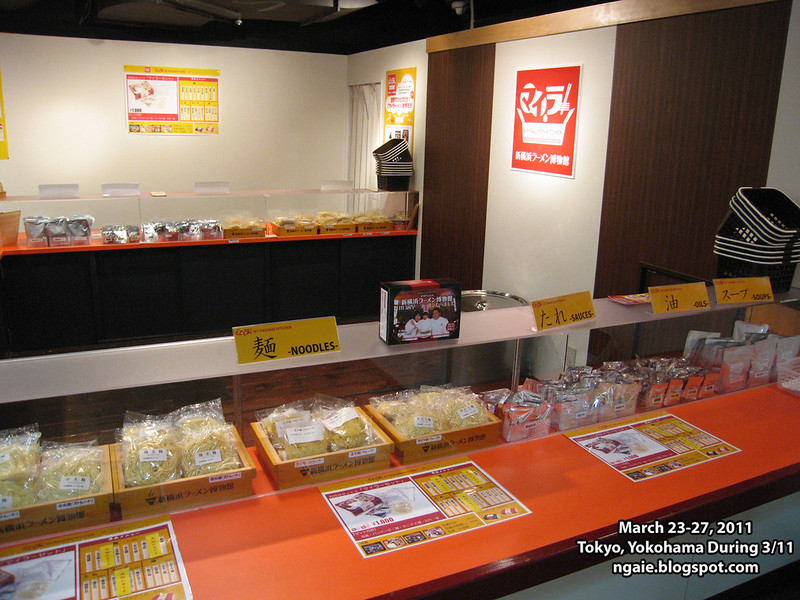

You could even personalize the packaging by sticking your face to the package!

I am assuming that this is the mascot for the ramen museum?

After finishing our ramen, we went to visit the Yokohama Chinatown. It seems that now the Chinatown has become synonymous with Yokohama?
The massive Shin-Yokohama station building on our way back to the central area of Yokohama.
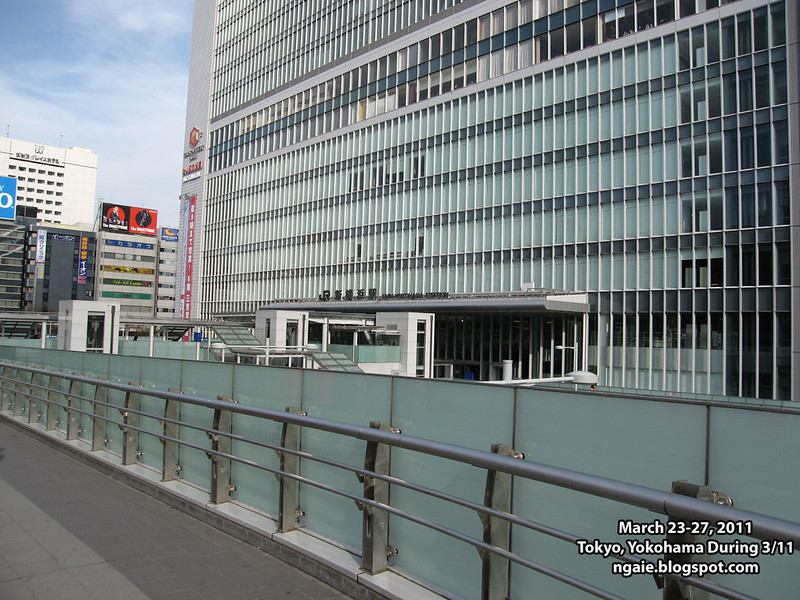
But before going to Chinatown, we walked along the waterfront to see the Yokohama skyline.
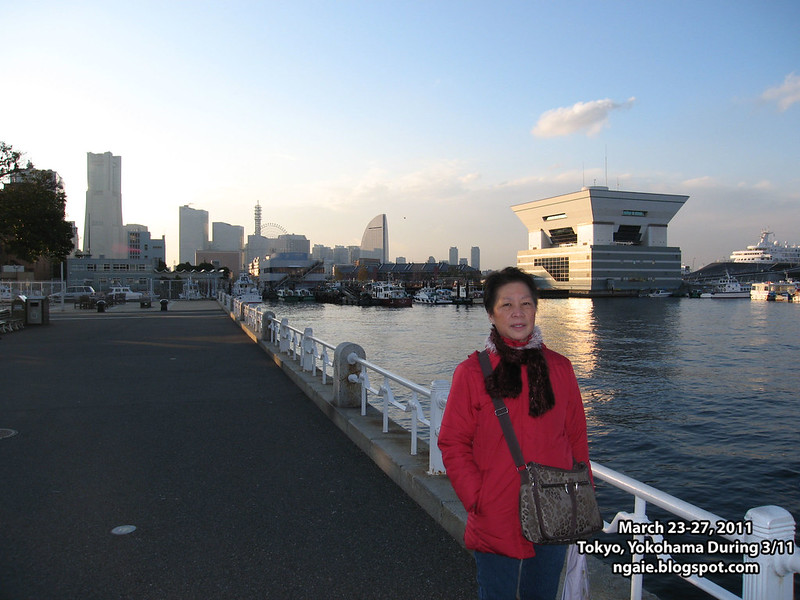
Yokohama Chinatown, an idealized version of a Chinatown without the "distinct smell" of other Chinatowns elsewhere in the world.
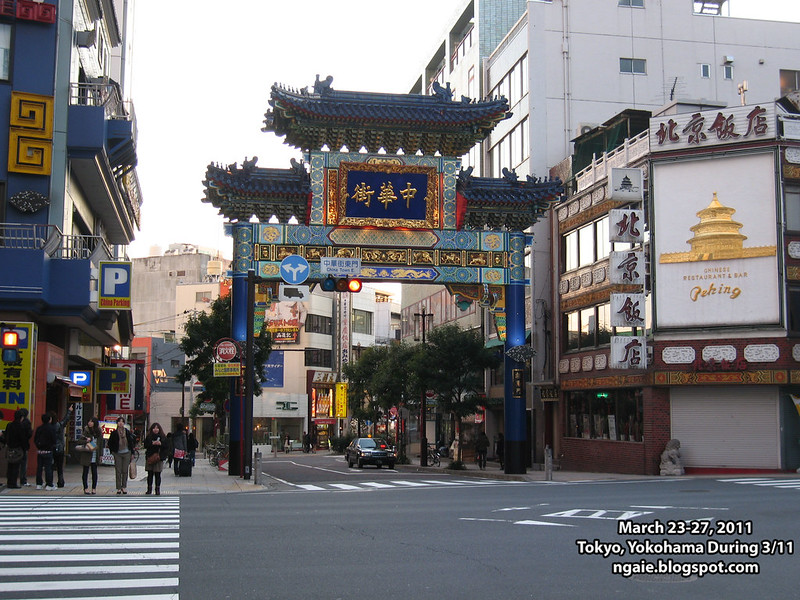
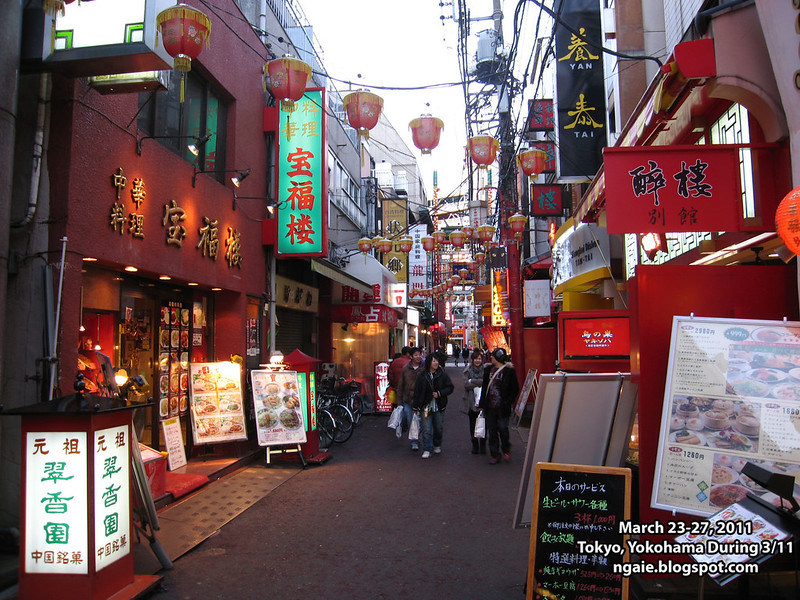
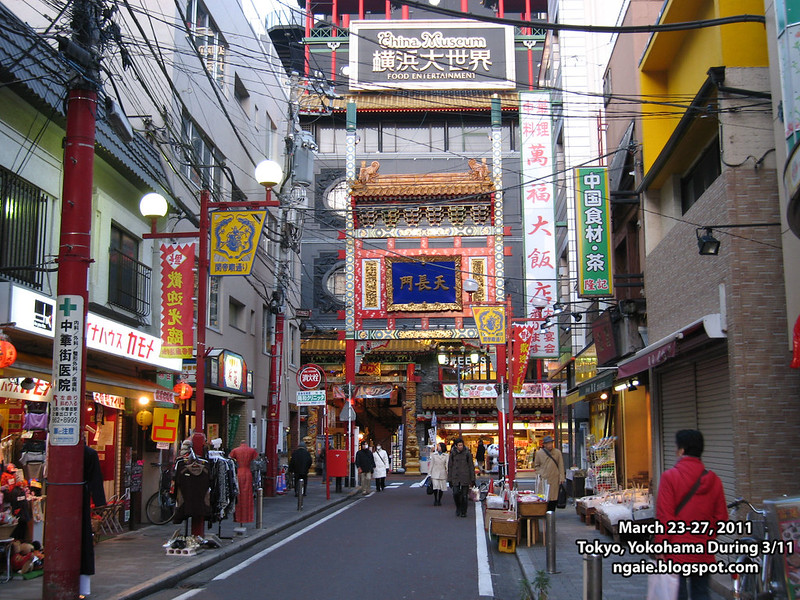
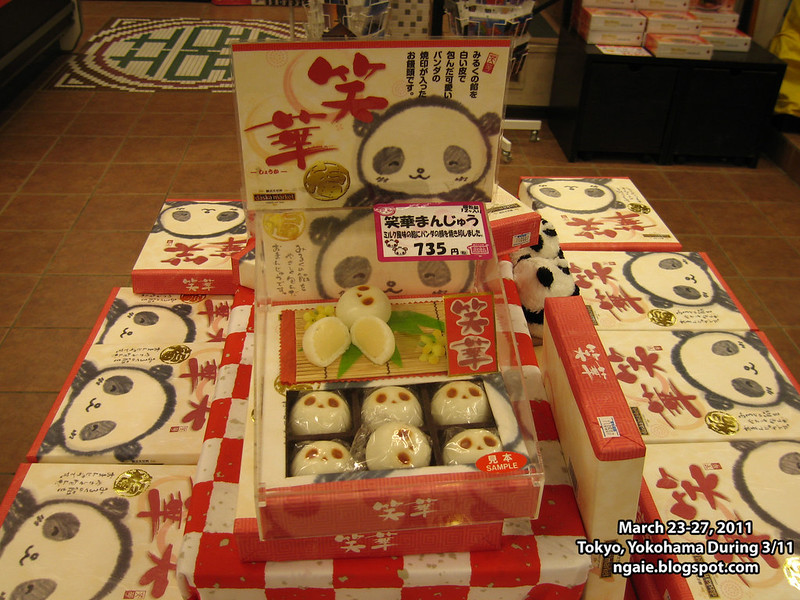


Fortune teller stands. You don't really see these in other Chinatowns elsewhere.
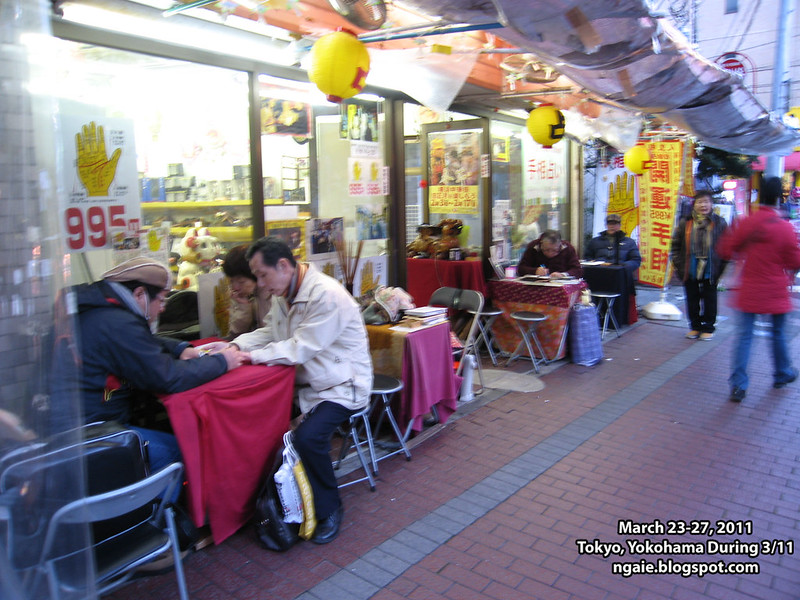
Chinese temple.
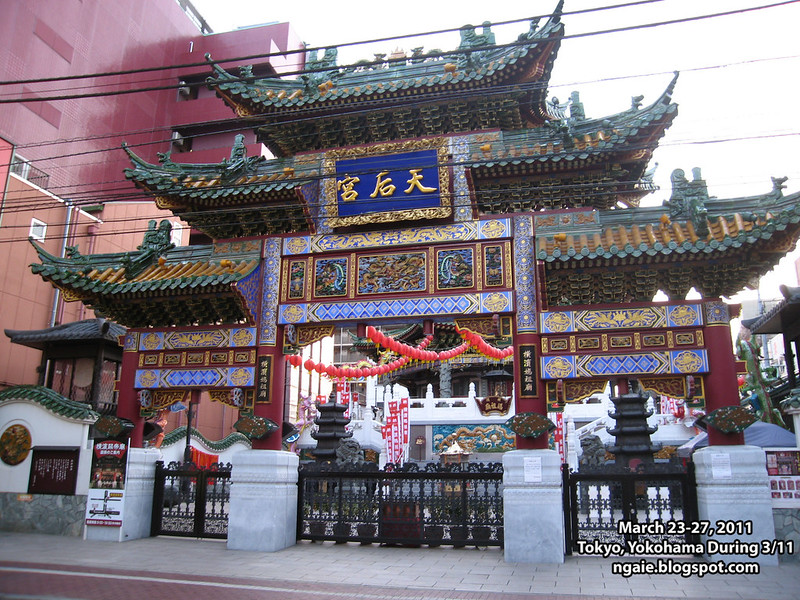
Apparently this restaurant was visited by Chinese President Jiang Zemin when he came here.
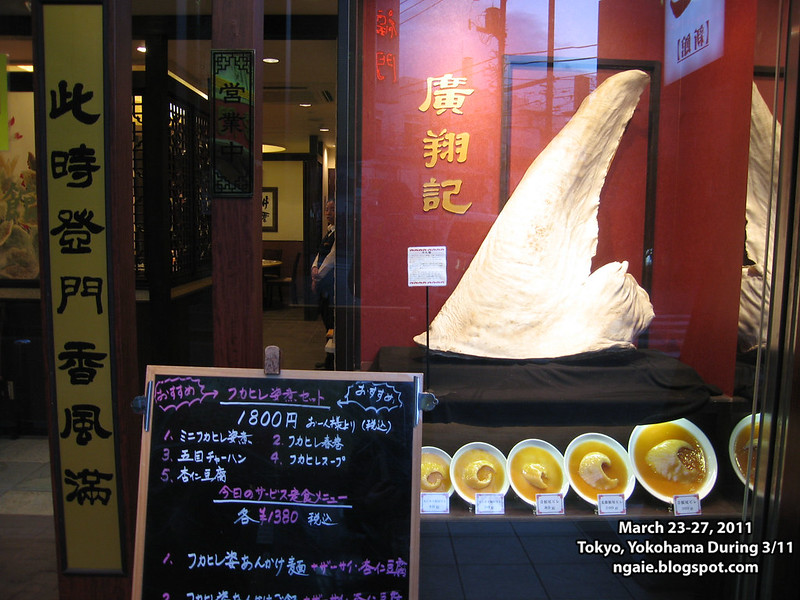
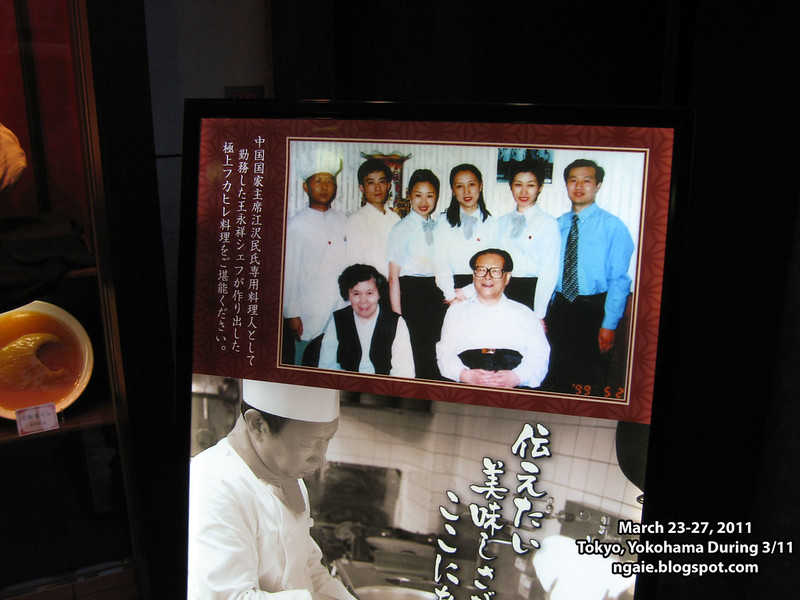
By this time it was getting dark and we noticed this shop that had multiple locations bragging about how its chefs where "world champions in Chinese cooking" and their "World's No. 1 steamed buns" so we tried one of their things by ordering the pan-fried bao/mantou (生煎包/生煎饅頭).
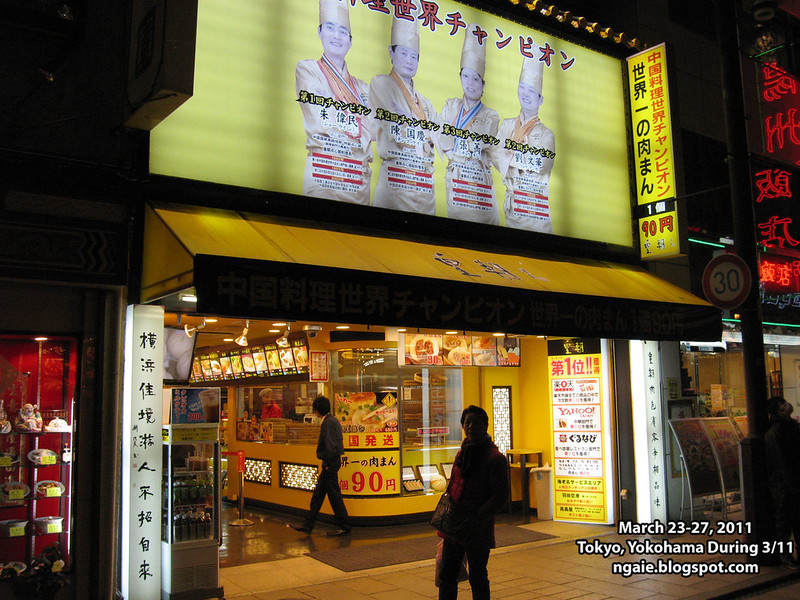
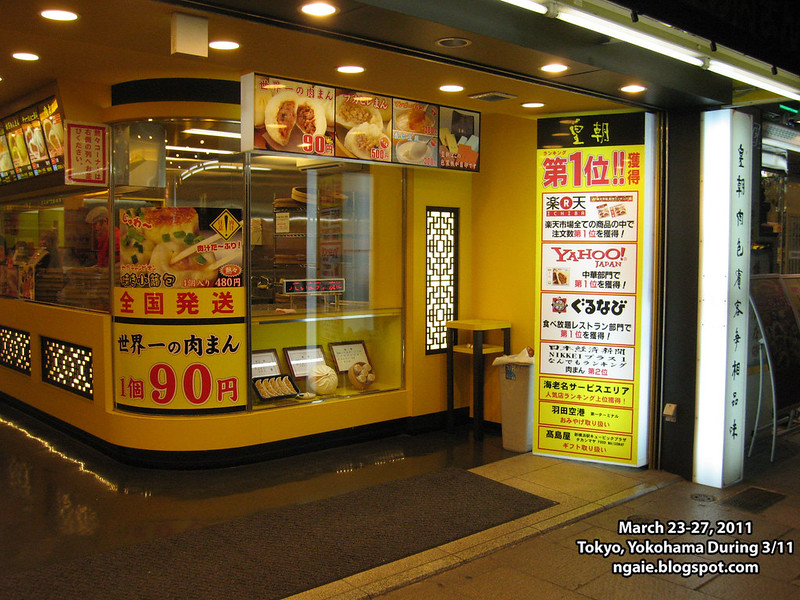
It was pretty good although I don't know if it qualified as "the best".
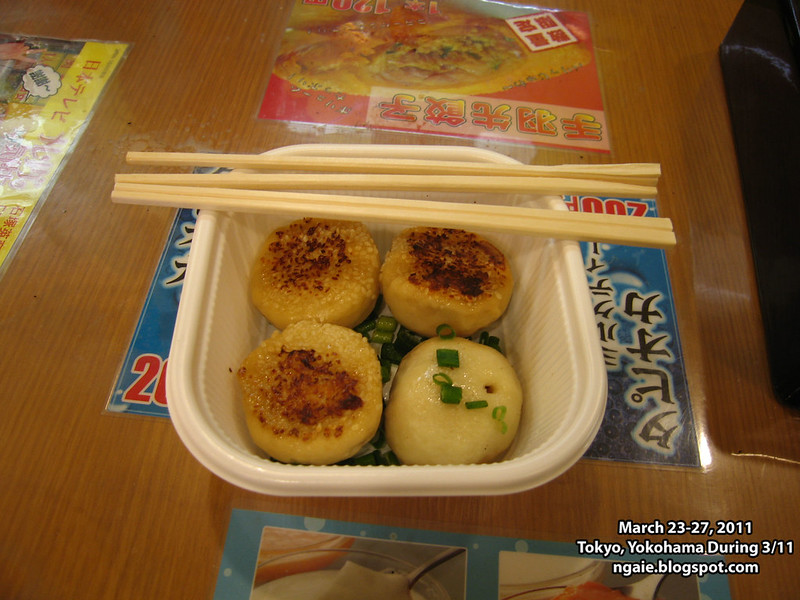
The neon lights of Yokohama Chinatown at night.

The next day on March 25, 2011, we visited the Railway Museum near Omiya in Saitama but because there are too many pictures, it will be covered in the next post.
On March 26, 2011, we went to the Ueno and Asakusa area of Tokyo.
First we went to the Ameyoko market near Ueno, one of the rare open air markets which sells everything from candy to dried goods to seafood.
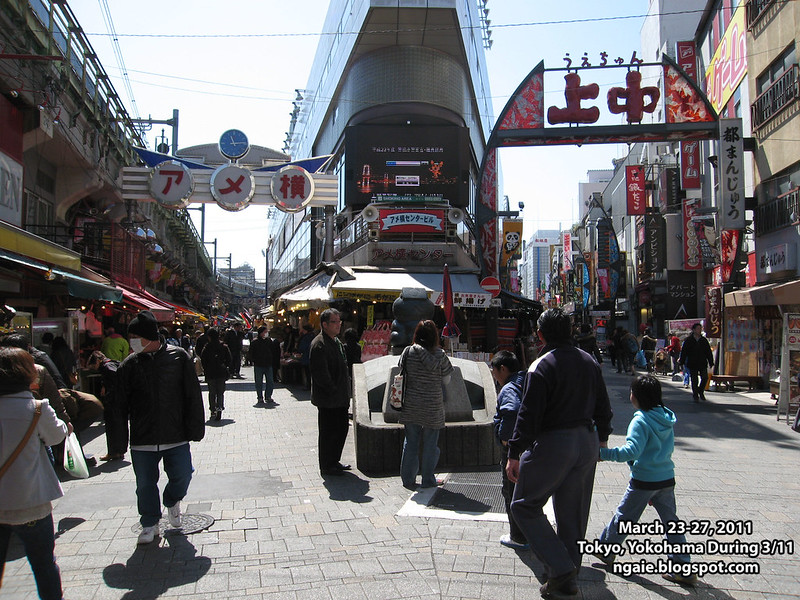
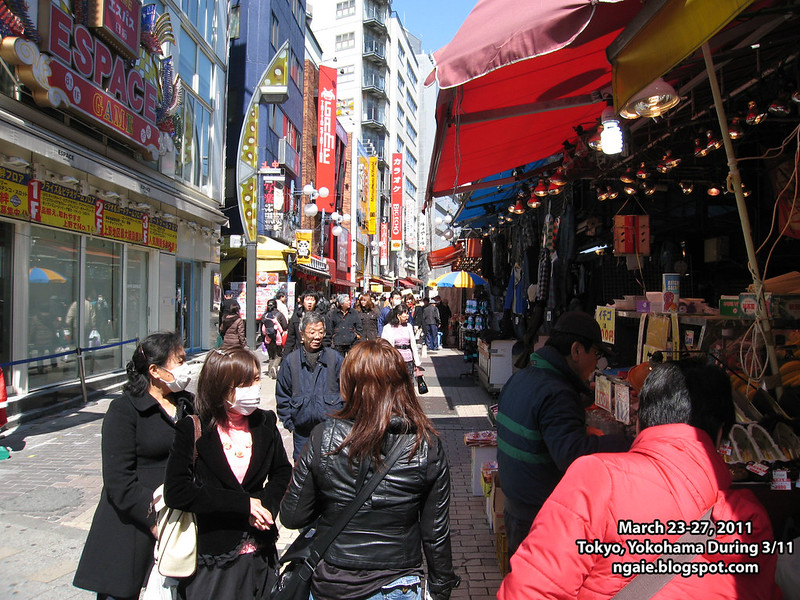
Next we went to Asakusa.

The Tokyo Sky Tree tower under construction in 2011.
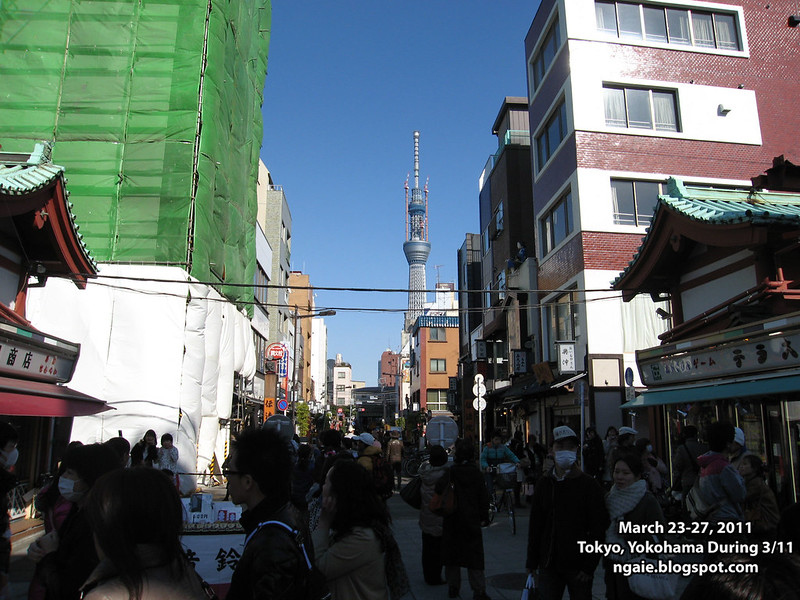
At Sensoji Temple in Asakusa.
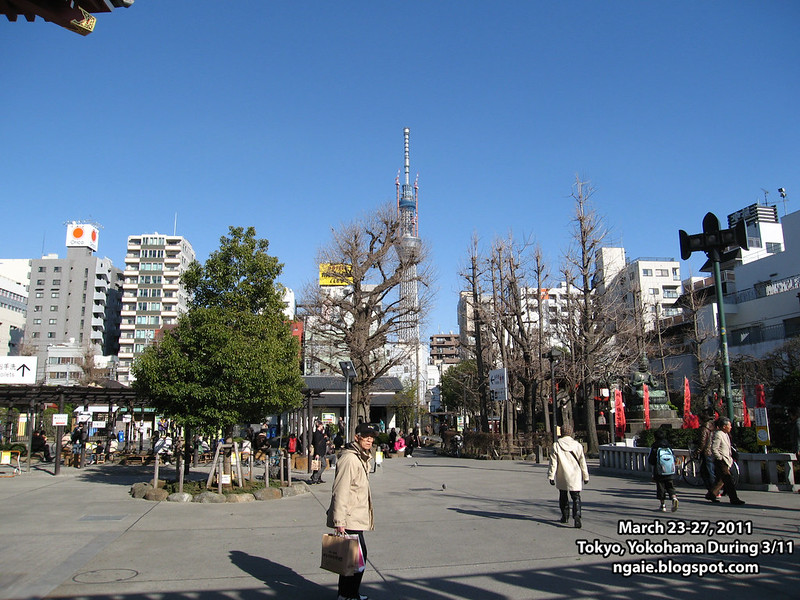
There were very few tourists here despite this temple being a major tourist attraction because of the effects of the 3/11 disaster.
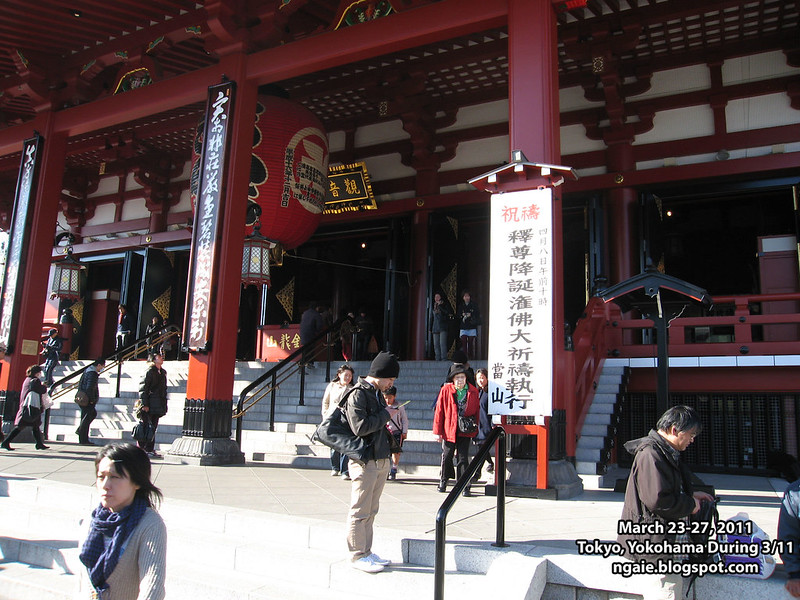

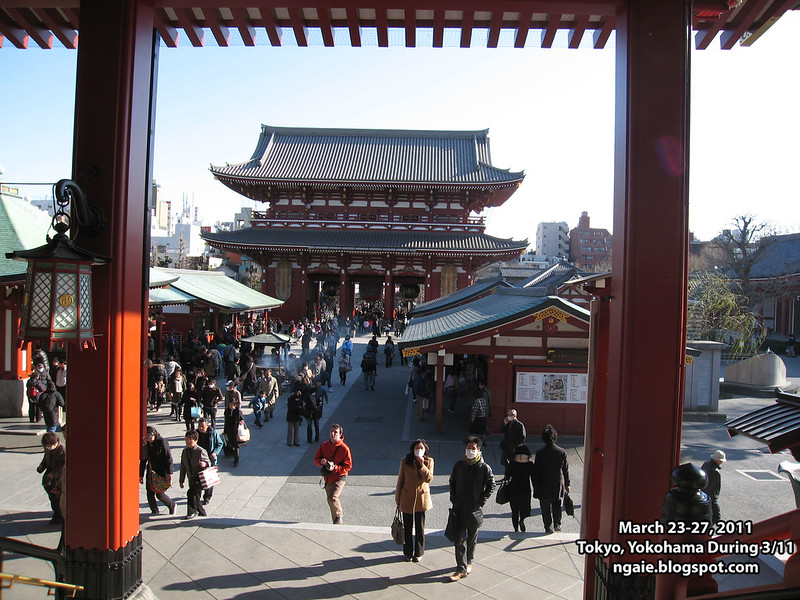

For some reason, the "Denny's" sign seems to stand out in this picture.

In front of the then under construction Tokyo Sky Tree and the Asahi Beer building.
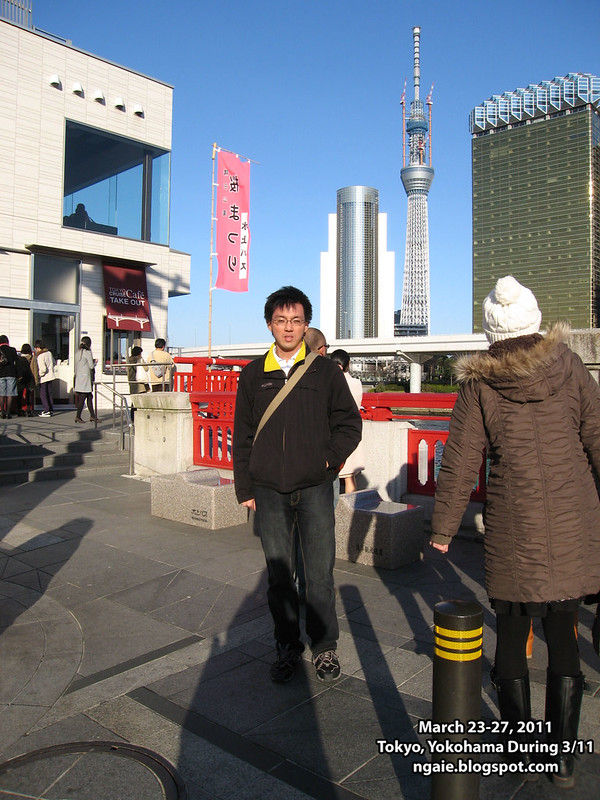
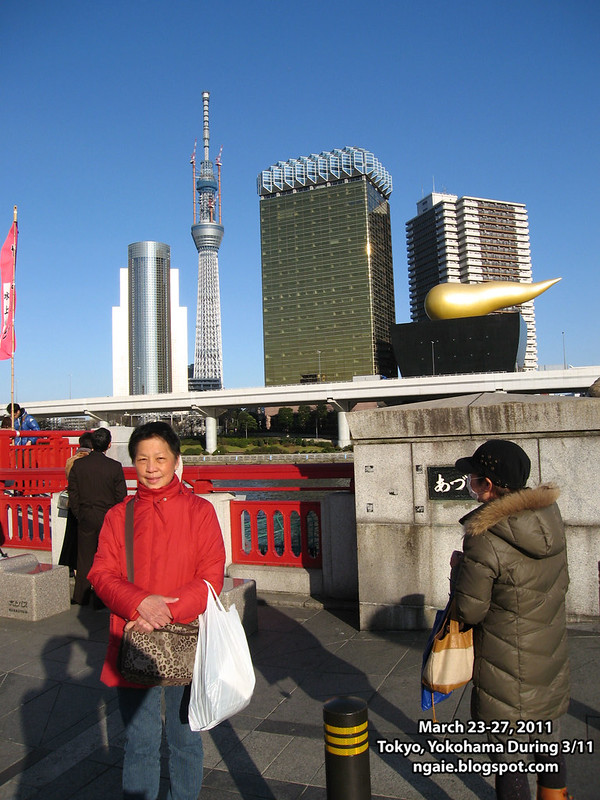
I think this is the first underground shopping arcade ever built in Japan.
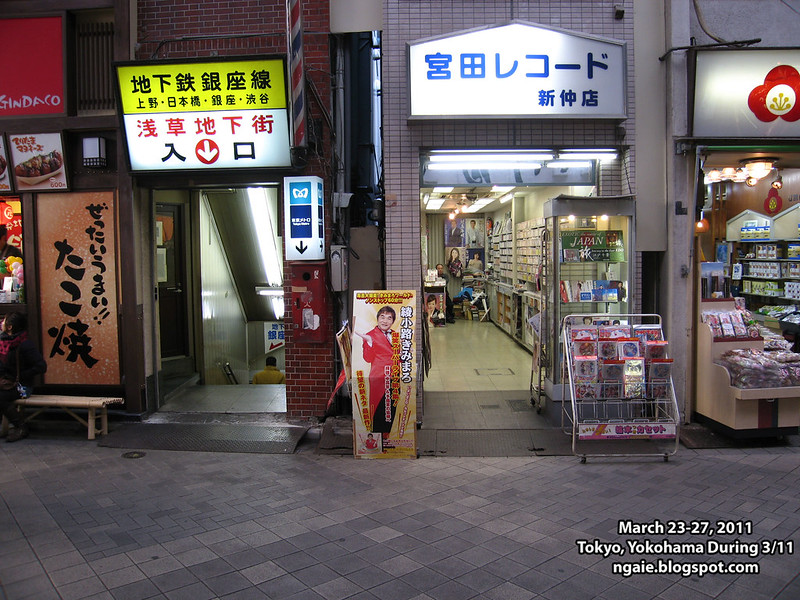
After finishing our visit of Asakusa, we went to Ginza to walk around.
I couldn't help but notice the popularity of the German layered cake called the Baumkuchen (バウムクーヘン) that is prominently displayed at the department store windows.
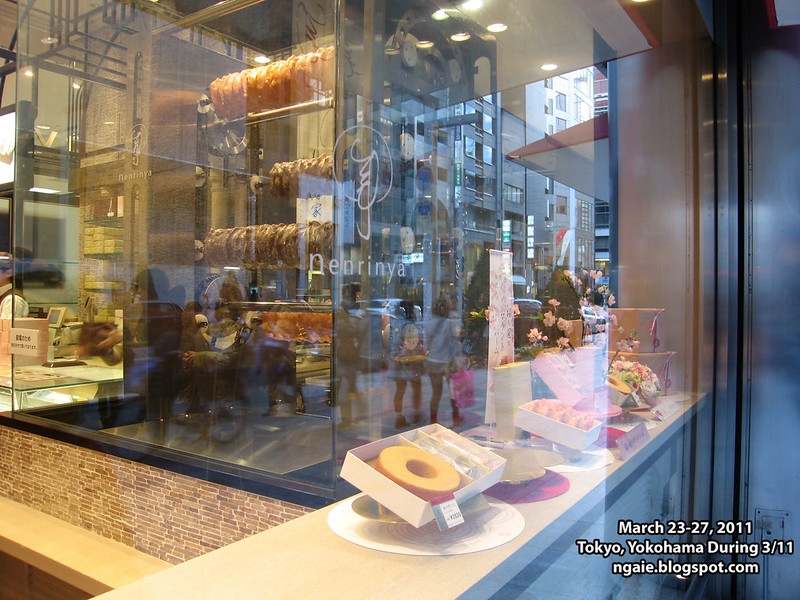
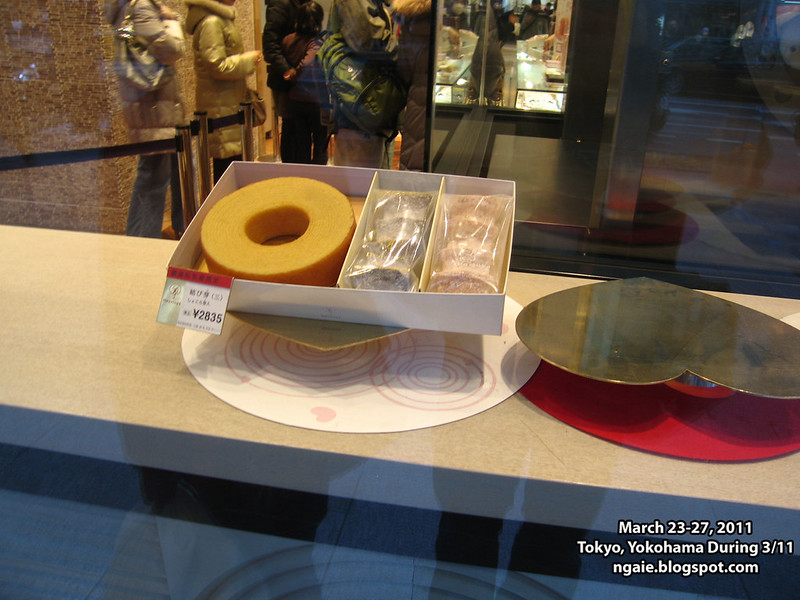

All the different flavours of Kit-Kat sold by Nestle in Japan at a souvenir shop in Tokyo station.

Includes such weird flavours as miso.
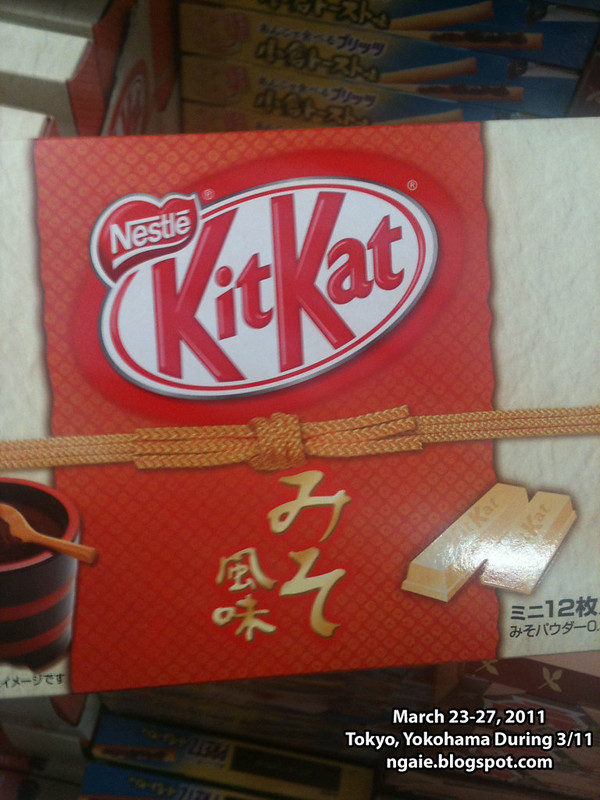
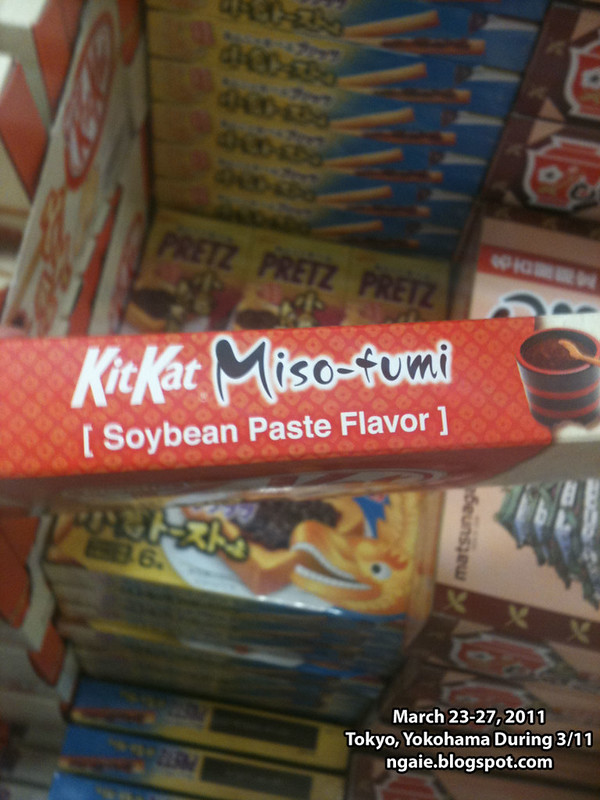
And the cheese flavour which I bought. (It wasn't good...)

On March 27, 2011, we walked around the the Roppongi (六本木) and Azabu-jūban (麻布十番) area because I wanted to show my mom where most of the expatriates, mostly from Western countries live.
But first we went to eat lunch at Iron Chef Chinese (from the TV show), Chen Kenichi's (陳 建一) main restaurant in Akasaka.
Passing the Meiji Memorial Picture Gallery on the way to the restaurant.

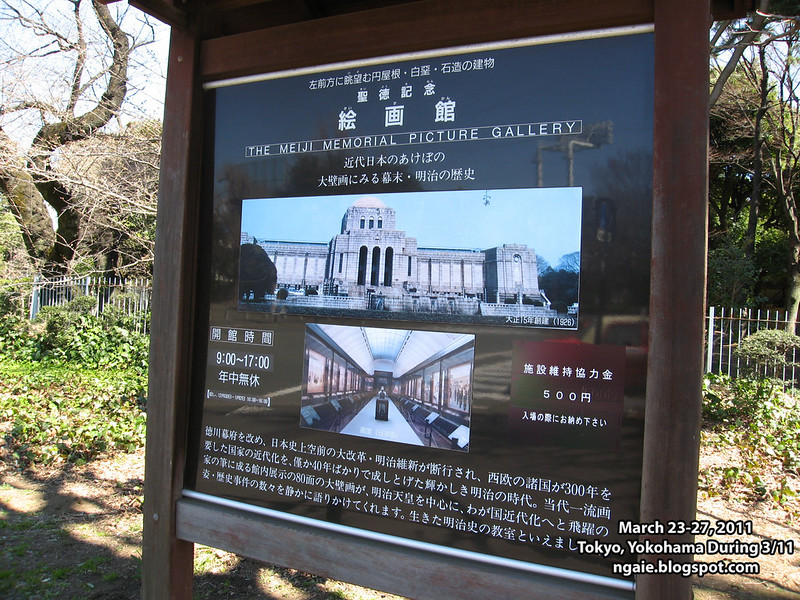
His restaurant, unimaginatively called Akasaka Sisen Hanten (赤坂四川飯店) was really hard to find. It was located in an office building in the heart of the central government district. Maybe he does a lot of business among politicians?
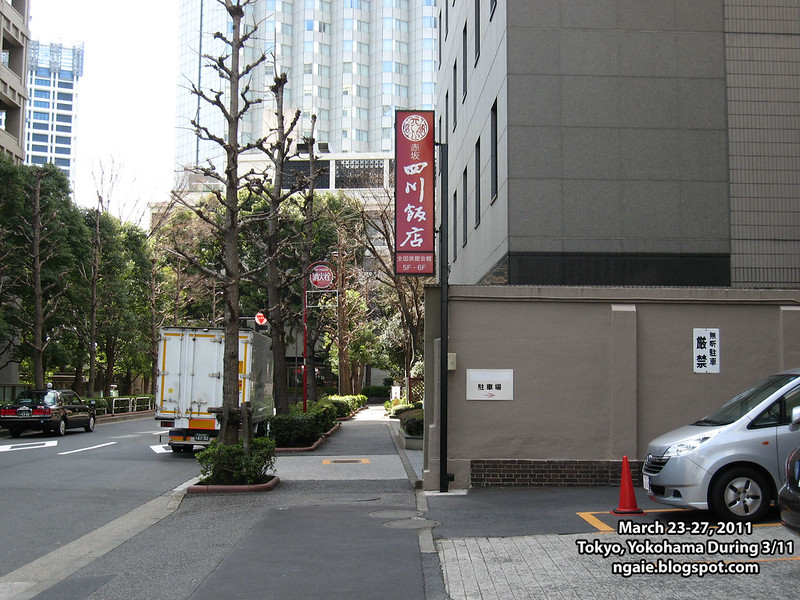
His famous ma-po tofu (麻婆豆腐) dish which cost around 2000 yen (US$20.00) and unlike most restaurants which charge for bowls of extra rice, if you ordered ma-po tofu, you could eat as much rice as you wanted! Because it was so hot and spicy, I think I ate around 3-4 bowls of rice.
I observed other Japanese diners and they did not eat the ma-po tofu with any rice, maybe this is the Japanese style of eating ma-po tofu?
Despite being a high-end Chinese restaurant, the price was quite reasonable for the amount of food you got. In addition, we also ordered a dish of stir-fried noodles.
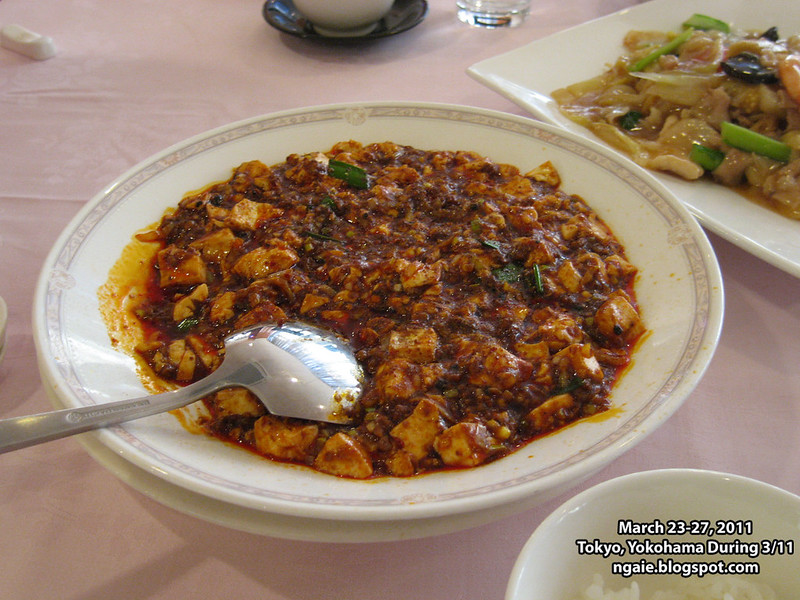
This ended our the Tokyo section of our trip (which went as planned without any problems despite the fears of radiation and etc.) as on the next day, on March 28, 2013, we headed to Taipei.

0 comments:
Post a Comment